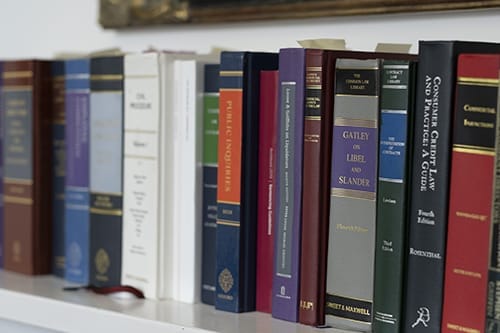image: docusign-Z1yEXp8KTko-unsplash-scaled-e1651759082492.jpg
eSignatures – Exploring their use and validity
Search Posts

Company and Commercial litigation
We act on behalf of large international enterprises, UK institutions, SMEs, and high net worth individuals across all aspects of company and commercial litigation.

Personal and Corporate Insolvency
An exacting field, insolvency cases require the very highest levels of precision and expertise. Our blended team guarantees superior results whatever the nature of the case.

Civil Fraud
The number of civil fraud cases heard in the courts has undergone a 50% rise in recent years.

Public Inquiries
Our specialist team have significant experience both of representing individuals, private organisations, campaigners, charitable organisations, and public bodies who find themselves under scrutiny, required to give evidence, or face the prospect of appearing at a hearing.





In England and Wales there is no absolute piece of legislation or case law that confirms electronic signatures (eSignatures) can be used to execute contracts and deeds – The Electronic Communications Act 2000 (ECA) does not expressly provide for the legal validity of electronic signatures. The common law, however, recognises a range of signature types, and the courts have accepted the use of eSignatures since the EU eIDAS regulation came into force in 2016.
As a result, lingering doubts persist over the use of eSignatures. So, what are eSignatures and what is the current best practice for using them?
What is an eSignature?
Put simply, an electronic signature is a signature in electronic form. It enables signatories to approve or agree with the terms of a document, just as with wet signatures. An eSignature is essentially a process that uses computers to authenticate the signatory and certify the integrity of the document.
Under the eIDAS regulation, there are three levels of eSignature:
Background guidance on the use of eSignatures in England and Wales
In 2018, the Law Commission began to explore the legal position around the electronic execution of documents in a bid to address underlying uncertainties around the use of eSignatures.
In its report ‘Electronic Execution of Documents’ published in 2019, the Law Commission confirmed there was indeed scope for using eSignatures for the execution of many documents, including deeds, provided that (a) the person signing the document intended to authenticate the document, and (b) that any formalities relating to the execution of the document are satisfied.
Nevertheless, the report also recognised that numerous uncertainties existed which have hindered the use of eSignatures and limited the confidence of professionals and individuals in their use. Therefore, in an effort to provide further clarity on the issues and deliver best practice guidance about their use, a working group was set up in 2020, co-chaired by Mr Justice Fraser and Law Commissioner Professor Sarah Green. Its interim report was published on 1st February 2022.
The guidance sets out best practice for using electronic signatures, as well as making recommendations for future reform to ensure that as many official documents as possible can be executed electronically.
The guidance can be distilled into five high-level points:
To provide assistance for businesses looking to implement the use of eSignatures, The Company Law Committee of the Law Society has recently published a useful Q&A.
Here is a brief summary:
Does a witness need to be physically present at the location of the signatory or can they witness via video link?
A witness must be physically present to validly witness the signature of a deed
Can a witness apply the electronic signature of a person entering into a deed to enable them to physically witness the application of the signature when not in the same place as the signatory?
No.
Can a spouse, child, other family member, solicitor or advisor witness a signature?
Yes, except for when the witness is also a party, or the document explicitly requires the witness to be an independent person.
If a notary is required, do they need to witness the signature physically in order to notarise it?
No, not always, if an individual signatory is known by the notary and they can confirm both the identity of the signatory and that their signature is genuine.
Is there a preferred method of electronic signature?
As mentioned above, it is vital to determine the optimal form of electronic signature for the transaction dependent on the nature of the parties, the risk level, value, and personal circumstances. Additionally, when a signing platform is used it should provide a minimum set of security/safety/functionality with a strong audit and the ability for signing parties to download/retain executed documents.
Can you achieve valid signature by attaching a contract to an email and indicating signature/agreement in the body of the email?
Yes, provided the contract does not need to be executed as a deed, there are no other formalities relating to execution, and it doesn’t have to be filed with a registry.
Can one person apply another’s signature electronically (e.g. on behalf of a Director)?
Yes. Where the signatory is acting as an individual, provided valid authority has been given to insert the signature.
Can company documents be executed using different counterparts?
Documents requiring more than one signature can be executed either in counterpart or consecutively and using any valid method of signature except where the document is a deed executed by company seal in the presence of two directors – then both directors would need to be physically present.
Can you use a combination of execution methods?
Yes. You can have a variety of execution methods on different counterparts which would each count as originals.
Can you use electronic signatures on board minutes and resolutions?
Yes, in the most part.
Do articles of association or board resolutions need to authorise use of electronic signatures?
No.
Is it necessary for documents to contain a statement that electronic signatures are legally valid?
No.
Is any additional evidence required of electronic signature or witnessing?
No. There is currently no legal requirement to obtain additional evidence.
If you are in any doubt about the use and validity of eSignatures, the Leverets team can provide clarity and guide you through the process.